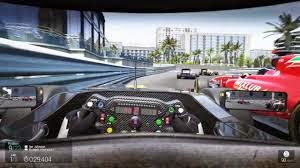 A Spanish driver is really a frustrated Formula 1 racecar driver. There is a reason Formula 1 is gaining popularity steadily. You can stand on a country road and see a car swoop around the tight curves and race along the straightaway with a roar of the motor and the transmission, and you can almost see the driver think himself Fernando Alonso or Kimi Raikkonen at the Monaco Grand Prix.
A Spanish driver is really a frustrated Formula 1 racecar driver. There is a reason Formula 1 is gaining popularity steadily. You can stand on a country road and see a car swoop around the tight curves and race along the straightaway with a roar of the motor and the transmission, and you can almost see the driver think himself Fernando Alonso or Kimi Raikkonen at the Monaco Grand Prix.Of course, this concept of my car, my rules goes against the concept of road safety. As anyone can imagine, Spain has a high rate of accidents. In 1995 there were almost nineteen million vehicles on the road, from motorcycles to tractor trailors to tractors. There was a total of over eighty thousand accidents, not all of them with victims, but expensive for the insurance companies. By 2012, however, between a crackdown by Tráfico (the green-uniformed much-hated national police that patrol roads) and the recession, the number went down in relation to the motor vehicle population. Though the vehicles on the road amounted to over thirty-one million, the accidents had only gone up to just over eighty-four thousand. While the actual number increased, it increased by much less than the vehicles on the road. The Spanish National Institute of Statistics says that in 1995 there were 44 accidents for every 10,000 vehicles. By 2012 it was 27 for every 10,000.
Campaigns by the Dirección General de Tráfico with heart-stopping commercials on television were designed to make people think about the end result of a tragic car accident. People complained about some of those commercials, saying they were too strong for the general public. There came a point where they weren't necessary. Few people haven't been involved in an accident, even if only a fender-bender. My husband and I had three accidents and every time the car was totalled. The second was the more serious because we had our then five-month-old daughter travelling with us. Luckily the only damage we got was a cut on my upper cheek that left me with a dimple. A 23-year-old neighbor of ours was killed around fifteen years ago in an accident that his parents never really understood. The police told them he had driven off the road in the early morning hours, but a witness told them he had swerved to avoid another car. Personal experience tends to temper any over-enthusiasm at the wheel much more than gory commercials.
The recession has made a lot of people abandon their dreams of being racecar drivers on a daily basis, too. With gasoline over €1.60 a liter at the pump and maybe a €700 a month unemployment check, people had to begin to use their car sparingly and learn to save fuel by driving conservatively. At the same time Tráfico began to crack down with ever-increasing fines on any deviation at the wheel. In that sense, most people see the fines as a way to pick our pockets more than stopping the nutcases. Radars have been set up in places where there have never been accidents but where drivers push the speedometer. In what are called puntos negros or black spots, where people have died over the years, you'll rarely see a patrol car. Every so often they'll announce a week with stepped-up monitoring of speed or alcohol. Or talking on the phone, which is against the law and carries a fine that can make your paycheck shudder. There are apps now through which people can send in information on where a patrol is set up or a mobile radar. The cops also know about them, so they'll set up a control and in a half hour they pack up the tent and move elsewhere, staying ahead of the invisible eyes.
The traffic lights are another point of conflict between drivers, the law, and safety. People who drive repeatedly through certain lights know the timing exactly and will generally jump the gun after the cross road gets the red light, while theirs is still red for another second. At certain lights that has caused accidents as both the driver on the main street and the driver on the cross street decide to take advantage of the last minute. On many traffic lights now there are cameras that take a beautiful picture of the license plate of impatient drivers. Sometimes the picture is taken at an unearthly hour. Normally, traffic lights are on intermittent amber in the early morning hours because there simply isn't any traffic at that time of night. But on some lights where there are cameras you have to sit still at a red light at three o'clock in the morning without another soul in sight to avoid a €200 fine. And it's not the first time someone drives through two or three red lights at the empty time of night and accumulates two or three love letters gently asking for money or else. The driver just doesn't realize he's on candid camera.
So, this afternoon I am not going to drive as if I were at Monza because the road is wet and I am conscious that the machine I am manipulating can end up killing me and others. But I will still check my traffic apps and keep an eye out for the green trolls because my bank account is not ready for an onslaught.



Comments
Post a Comment